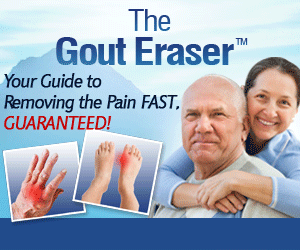
You might be aware of a few such myths already. Your grandfather knew that the weather was going to get back whenever his knees started to hurt. On the same note, you might as well notice a few changes in how you feel. The temperature drops a little and you feel your joints stiff. It is just part of the game – pretty much everyone out there links arthritis and weather.
No matter what happens, you blame pains and stiffness on the weather. But then, is there any research? How does weather affect arthritis? Take barometric pressure, for example. The pressure in the air will affect your joints, indeed. But then, humidity and temperature may also have a word to say – difficult to link them, but there is definitely a connection.
Does weather affect arthritis?
Despite the scientific results being a little confusing and vague, most people experience more joint pain when the weather changes. Most people will find pains to ease in warm climates, but there is no scientific research about it.
The link between arthritis and weather
Determining a scientific link between arthritis and weather can be a bit tricky because it is hard to find the connection. Most research studies can only be performed on groups of people. Other than that, scientific research is impossible. There are, however, some theories out there, as well as decisive results based on how people feel – based on how you feel as well.
For example, joint pain is sensitive to the barometric pressure. Changes are likely to affect the pain and not always in the good way. Such changes affect all kinds of joint pains and not just the ones related to arthritis. How? Simple. As a result of having arthritis, cartilages cushioning your joint bones are worn out. Nerves are more exposed then and they can easily pick up on such changes.
Then, just like many other things, your body will experience changes in the barometric pressure in different ways. As it changes, your muscles and tendons will contract or expand. This way, the joint will end up with less pain or perhaps more pain. Low temperatures tend to make fluids thicker as well – including the ones in your joints. As a direct consequence, your joints will feel a bit stiff.
Furthermore, what do you do when the temperature goes too low? Not much. You are usually stuck inside, unless you actually need to go out. People spend more time chilling indoors when the weather is bad. They are not moving too much, so joints are a bit inactive. Obviously, they also become a bit painful and stiff.
The type of weather affecting arthritis
Now, weather changes can go in more directions – some of them are actually good for arthritis, while others are bad. If you hate hot weather and you would rather have cold weather, you have some bad news – cold weather is associated with more pain. For instance, people with osteoarthritis will experience more pain as the temperature drops – the same goes for a low barometric pressure.
Unlike the temperature, the barometric pressure will affect all types of arthritis, regardless of the changes. For example, even if the barometric pressure goes higher, pains will still become more intense. Moreover, apart from low temperatures, it seems that humidity is also a risk factor for people suffering from arthritis.
Dealing with weather related joint pains
Most people suffering from arthritis can certainly link weather changes to this affection. Even if no one can tell 100% it is true, you know your body reacts differently to the painful sensations when the weather changes. Now, how do you get over these problems? Is there a way to counterattack the pains associated with the weather?
Ideally, you should try moving to a warmer climate. Sure, it sounds like a massive lifestyle change that most people cannot really afford. The good news is there are many other things you can do at home in order to relieve the pains in your joints. Obviously, the first thing to do is get ready, so keep an eye on the weather forecast.
When the temperature goes down, simply keep yourself warm. Take hotter showers or perhaps long warm baths. Forget about shorts and a shirt. Instead, get more layers throughout the day. Wear socks, even if they feel a bit uncomfortable indoors. At night, raise the temperature a little – even if your bills will be slightly higher – or use an electric blanket to keep warm.
Paraffin baths are worth some attention too. Dip your feet and hands in it, then let the wax harden. Your body will simply grab all the heat, meaning your joints will feel better. Heating pads can also help on sore joints. Some drugs will help too, but avoid taking them by ear – just ask your doctor for some painkillers or stick to natural remedies.
It pays off keeping your weight within healthy standards. Keep active and try some mild exercises for your joints, such as yoga. Avoid straining your joints if you do not have to. Let someone else in work do the heavy stuff. The general idea is fairly simple – you have to look after yourself. Eat right and get plenty of sleep and your arthritis should be kept under control without too much hassle.
Conclusion
Bottom line, arthritis and weather are hard to link from a scientific point of view. There are various research studies that show a connection based on how people feel in different weather conditions. But on the same note, there are also studies that show no connection at all. What truly matters is how you feel yourself. Most people do experience some changes when the weather is different. If you count yourself among them, chances are the weather does affect your pains. There are different ways to prevent such flareups and most of them imply keeping yourself warm and looking after yourself.
Suggested articles:
– How To Prevent Arthritis – Arthritis Risk Factors and Its Prevention
– Pisotriquetral Arthritis – Causes, Symptoms and Treatment
– Hypertrophic Arthritis – Causes, Symptoms and Treatment
– Postpartum Arthritis – Arthritis After Pregnancy
– What Does Arthritis Feel Like
– Top 12 Foods to Avoid with Arthritis – The ULTIMATE List
– Arthritis Vs Arthralgia – Everything You Need to Know
The Gout Eraser™: The all-natural guide for permanent gout removal
The Gout Eraser™ is a short, to the point guide on how to reverse gout symptoms without ever leaving your home. The guide goes into extensive detail on exactly what you need to do to safely, effectively and permanently get rid of gout, and you are GUARANTEED to see dramatic improvements in days if not hours.
To learn more about The Gout Eraser™ system, check out the following free video presentation: The Gout Eraser™





